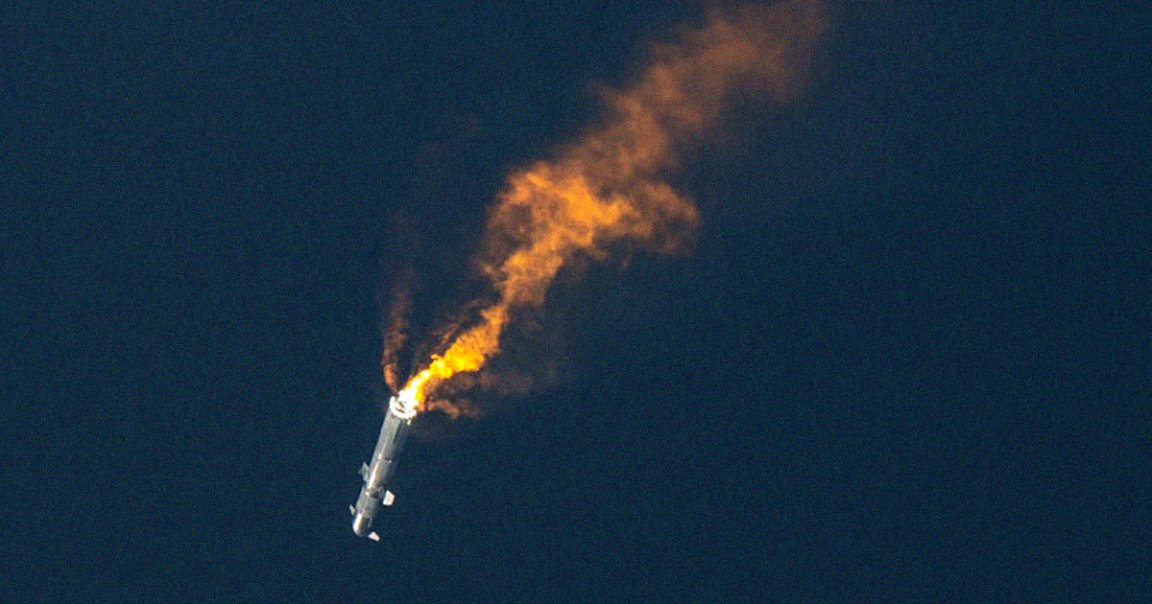
40 Long Seconds
During a Twitter Spaces chat over the weekend, The New York Times reports, SpaceX CEO Elon Musk revealed that the company’s massive Starship spacecraft and Super Heavy booster only self-destructed after a lengthy delay after receiving the command.
The giant 400-foot stack of rocket and booster took off from the company’s launchpad in South Texas last month, boring a huge hole into the concrete below and sending debris raining down over a huge area.
But only after 40 long seconds of it uncontrollably tumbling through the sky was SpaceX able to trigger the rocket’s flight termination system.
It’s a shocking revelation, given the level of risk involved, and supports the theory that SpaceX may have rushed ahead to launch the rocket without doing its due diligence.
Took Too Long
It was such a powerful and destructive event that even the Federal Aviation Administration, which gave SpaceX the green light for its first orbital launch attempt, is now facing a lawsuit from environmental groups in the area.
The suit alleges that the agency failed to assess the considerable environmental risks involved.
And as it turns out, things could’ve gone even worse. The launch also saw the rocket tumbling uncontrollably through the air, before blowing up in a massive puff.
But it turns out that the explosion occurred much later than expected. During this weekend’s discussion, Musk revealed that the flight termination system, designed to destroy the rocket in case it lost control, initially didn’t kick in after an energetic event caused several of the rocket’s engines to give out.
“It took way too long to rupture the tanks,” Musk admitted, as quoted by the NYT, adding that “the vehicle’s structural margins appear to be better than we expected.”
For the company’s next attempt, Musk said SpaceX will make sure that “the rocket explodes immediately if flight termination is necessary.”
As for the “human-made sandstorm” the launch triggered, Musk said that it’s something the company doesn’t want to repeat. SpaceX is planning to construct a large water-cooled slab of steel to protect the launchpad and stop debris and sand from kicking up.
Ground Pound
But when SpaceX will be able to try again remains to be seen. While Musk estimates it would take six to eight weeks to make the necessary repairs, the FAA has since grounded the rocket and will carry out its own investigation before it gives out another launch license.
As always, Musk is unperturbed and is still making incredibly ambitious predictions.
“We’ve probably got an 80 percent probability of reaching orbit this year,” he said over the weekend. “I don’t want to tempt fate, but I think close to 100 percent chance of reaching orbit within 12 months.”
More on Starship: Elon Musk Says Starship Generated an Unexpected “Rock Tornado”